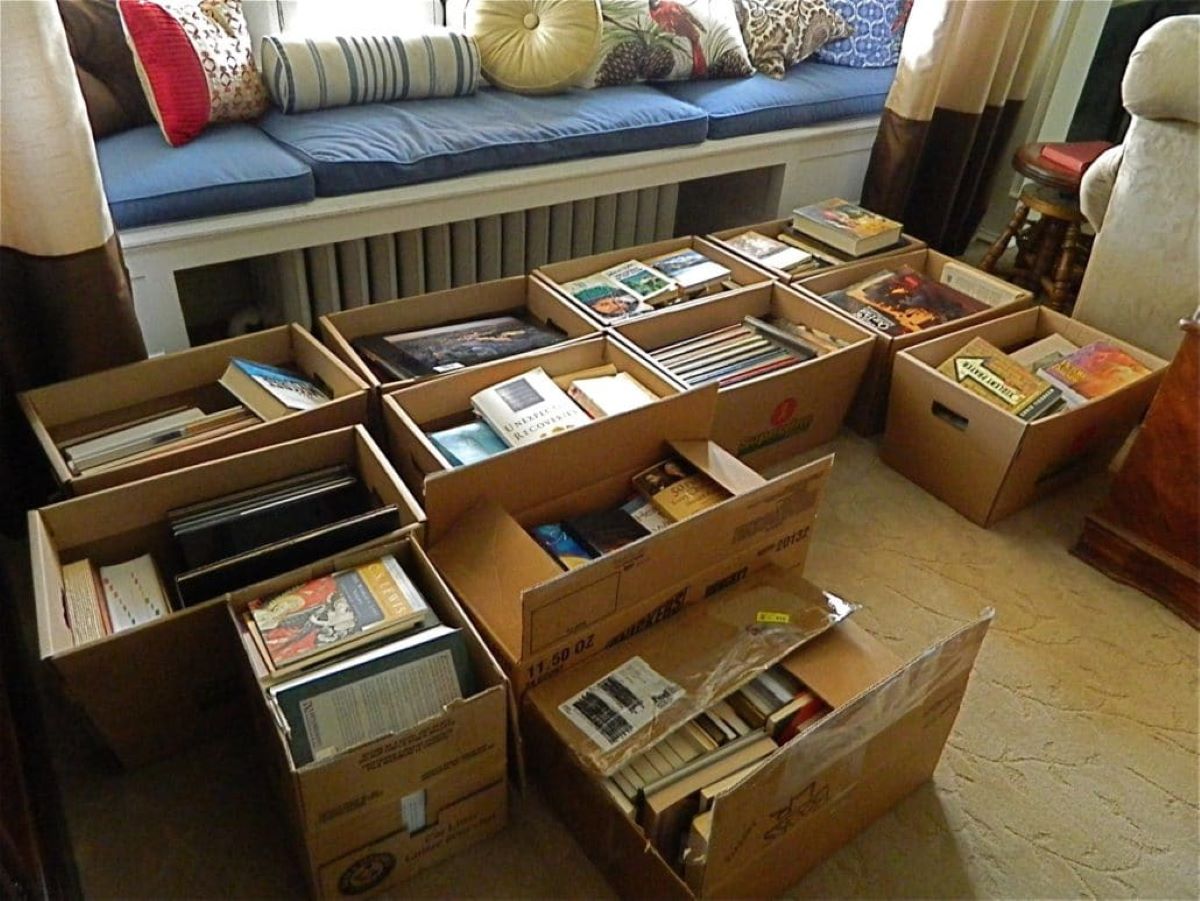

Articles
How To Store Books In Boxes
Modified: January 6, 2024
Learn the best way to store articles in boxes to keep them safe and organized. Follow these simple tips for efficient and space-saving storage of your books.
(Many of the links in this article redirect to a specific reviewed product. Your purchase of these products through affiliate links helps to generate commission for Storables.com, at no extra cost. Learn more)
Introduction
Storing books in boxes is an essential practice for book lovers, whether you’re moving to a new location, decluttering your home, or simply looking to preserve your precious book collection. By properly storing books in boxes, you can protect them from dust, moisture, pests, and other damaging factors. In this article, we will explore the benefits of storing books in boxes and provide valuable tips on how to do it effectively.
There are numerous benefits to storing books in boxes. Firstly, it helps to keep your books organized, making it easier to locate specific titles when you want to read them. By categorizing your books and labeling the boxes, you can quickly find the book you’re looking for instead of rummaging through shelves or piles of books. Additionally, storing books in boxes protects them from wear and tear, reducing the risk of accidental damage.
Choosing the right boxes for book storage is crucial to ensure optimum protection. It is recommended to use sturdy, acid-free boxes made of materials like cardboard or plastic. These materials are durable enough to withstand the weight of books and prevent them from getting crushed or deformed. Acid-free boxes are essential as they do not produce harmful chemicals that can cause yellowing or deterioration of the book pages over time.
Before packing your books into boxes, it is important to prepare them properly. Begin by cleaning the books to remove any dust or dirt. Use a soft cloth or brush to gently wipe the covers and pages. For hardcover books, you can also use a mild cleaning solution to remove stains or marks. Ensure that the books are completely dry before proceeding to pack them.
When packing books in boxes, it is crucial to handle them with care to prevent any damage. Start by placing a layer of packing material, such as bubble wrap or packing peanuts, at the bottom of the box. This provides cushioning to absorb any impact during transportation or storage. When placing the books in the box, stack them vertically to avoid any unnecessary strain on the spines. You can also alternate the orientation of the books to distribute the weight evenly.
Key Takeaways:
- Properly storing books in boxes protects them from dust, moisture, and pests, while maximizing space and ensuring easy accessibility. Choosing the right boxes and preparing books for storage are essential steps.
- Creating a suitable storage environment and implementing long-term storage tips are crucial for preserving the condition and value of your book collection. Attention to details such as handling books with clean hands and monitoring moisture levels is key.
Read more: How To Store Books In Cardboard Boxes
Benefits of Storing Books in Boxes
Storing books in boxes offers several advantages that contribute to the preservation and organization of your book collection. Let’s explore some of the key benefits:
- Protection from Dust and Moisture: Boxes provide a barrier against dust and moisture, which can cause significant damage to books over time. By storing books in boxes, you can minimize their exposure to these elements and ensure their longevity.
- Prevention of Sunlight Damage: Sunlight can cause discoloration and fading of book covers and pages. By keeping books in boxes, you shield them from direct sunlight and preserve their original condition.
- Reduction of Pest Infestations: Books are susceptible to pest infestations, such as bookworms or silverfish, which can feed on the pages and deteriorate the books. Storing books in lidded boxes helps prevent these pests from accessing your precious collection.
- Maximization of Space: Boxes allow for efficient use of space, especially if you have limited shelf or storage area. By neatly packing books in boxes, you can stack them vertically and utilize available space more effectively.
- Easy Accessibility: By labeling and organizing boxes, you can quickly locate specific books when you need them. This eliminates the frustration of searching through numerous shelves and helps you find the book you want effortlessly.
- Maintenance of Book Condition: Storing books in boxes protects them from physical damage, such as accidental spills, scratches, or tears. It also prevents books from getting bent or warped while being moved or transported.
- Safe Moving and Storage: If you’re relocating or temporarily storing your books, packing them in boxes makes the process easier and safer. Boxes provide added protection during transportation and reduce the risk of books getting damaged.
- Aesthetically Pleasing: Storing books in boxes can create a clean and organized appearance in your living space. Not only does it contribute to a clutter-free environment, but it also adds an aesthetic appeal to your book collection.
Overall, storing books in boxes is a practical and beneficial approach to ensure the long-term preservation and accessibility of your books. By taking the time to properly pack and organize your collection in boxes, you can protect your books from external factors and enjoy them for years to come.
Choosing the Right Boxes for Book Storage
When it comes to storing books, selecting the appropriate boxes is crucial to ensure the safety and preservation of your valuable collection. Here are some factors to consider when choosing the right boxes for book storage:
- Material: Opt for sturdy and durable materials, such as cardboard or plastic, that can withstand the weight of books. Cardboard boxes are a popular choice due to their affordability and availability. However, ensure that the cardboard boxes are of high quality and have sufficient thickness to provide adequate protection. Plastic boxes, although more expensive, offer superior durability and protection against moisture and pests.
- Acid-Free: Look for acid-free boxes to safeguard your books from damage caused by acidic materials. Acidic boxes can transfer harmful chemicals to the books, leading to yellowing, deterioration of pages, and deterioration of book bindings over time. Acid-free boxes are specially designed to neutralize these harmful effects and provide a safe environment for long-term storage.
- Size: Consider the size of the boxes in relation to the dimensions of your books. Opt for boxes that are slightly larger than the size of the books to allow for cushioning and airflow. Avoid boxes that are too small, as they can cause unnecessary pressure on the books or deforming the covers.
- Lid and Closure: Select boxes with secure lids and reliable closure mechanisms, such as handles or locks. A well-fitted lid prevents dust, moisture, and pests from entering the box and ensures the books remain protected. Additionally, boxes with handles or locks make it easier to carry or transport the boxes without the risk of accidentally opening.
- Stackability: If you plan to stack the boxes, choose ones that are designed to be stackable. These boxes typically have reinforced corners and edges to provide stability and prevent them from collapsing. Additionally, consider the weight limitations specified by the manufacturer to avoid overloading the boxes when stacking them.
- Transparent: Consider using transparent plastic boxes, especially if you want to easily identify the contents without having to open each box. Transparent boxes allow you to quickly locate specific books or assess the condition of the books without the need to open and rummage through multiple boxes.
- Environmental Considerations: If you’re conscious about the environment, look for boxes made from recycled materials or opt for reusable plastic containers. These eco-friendly options reduce waste and contribute to sustainable storage practices.
By carefully considering these factors, you can choose the right boxes for book storage that provide optimal protection, organization, and ease of access. Remember to prioritize the quality and suitability of boxes, as they play a crucial role in maintaining the condition and longevity of your precious book collection.
Preparing the Books for Storage
Before you can begin storing your books in boxes, it is essential to properly prepare them to ensure their preservation during storage. Follow these steps to prepare your books for storage:
- Clean the Books: Begin by cleaning the books to remove any dust, dirt, or stains. Use a soft brush or cloth to gently wipe the covers and pages. For hardcover books, you can use a mild cleaning solution and a damp cloth to remove stubborn stains or marks. Ensure that the books are completely dry before proceeding to the next step.
- Inspect for Damage or Mold: Thoroughly examine each book for any signs of damage or mold growth. Look for torn pages, loose bindings, or signs of insect infestation. If you come across any damaged or moldy books, take appropriate measures to repair or clean them before placing them in storage.
- Remove Bookmarks and Inserts: Take out any bookmarks, sticky notes, or inserts from between the pages of the books. These items can cause creases or damage to the pages if left inside during storage.
- Dust Off Shelf Space: Clean and dust off the shelves or storage area where the books will be placed. This ensures that the books won’t accumulate additional dust or debris during storage.
- Consider Climate Control: If you live in an area with extreme humidity or temperature fluctuations, consider storing your books in a climate-controlled environment. Excessive moisture or heat can damage the books and lead to mold growth or deterioration. A temperature-controlled space helps maintain an optimal environment for long-term book storage.
- Thoroughly Dry the Storage Area: Ensure that the storage area is dry and free from any moisture. Moisture can lead to mold or mildew growth, which can severely damage the books.
- Protective Covers: If you have valuable or fragile books, consider using protective covers, such as acid-free book sleeves or plastic wrap. These covers provide an extra layer of protection against dust, moisture, and physical damage.
By taking these preparatory steps, you can ensure that your books are in the best possible condition before being placed in storage. This will help preserve their integrity and keep them safe during the storage period.
Properly Packing Books in Boxes
Once you have prepared your books for storage, it’s time to pack them in boxes properly to ensure their protection. Follow these steps for effective packing:
- Choose the Right Box Size: Select boxes that are appropriate for the size of your books. Avoid using oversized boxes that can result in instability and potential damage. Boxes that are slightly larger than the books will provide enough space for cushioning materials.
- Add Cushioning Material: Start by placing a layer of packing material at the bottom of the box. Bubble wrap, packing peanuts, or crumpled paper can be used to create a protective cushion. This layer of cushioning will absorb any impact and prevent books from getting damaged.
- Arrange the Books Vertically: Place the books vertically inside the box, with the spines against the side of the box. This helps to distribute the weight evenly and prevents unnecessary strain on the spines. Avoid packing books flat or stacking them horizontally to prevent damage.
- Alternate Book Orientations: Alternate the orientation of the books to prevent them from leaning or tilting in one direction. This helps to distribute the weight evenly and maintain stability within the box.
- Fill Empty Spaces: Fill any gaps or empty spaces between the books with packing material. This prevents the books from shifting during transportation or storage, reducing the risk of damage. Be careful not to overstuff the box, as it may cause pressure on the books.
- Properly Close the Box: Secure the box by closing and sealing it properly. Use packing tape to ensure that the lid is tightly shut. This prevents dust, moisture, and pests from entering the box.
- Label the Box: Clearly label each box with its contents. You can include details such as the genre, author, or any specific categorization you prefer. This makes it easier to locate specific books when needed.
Remember to pack heavier books at the bottom of the box and lighter books on top to maintain balance and prevent any crushing. Consider the weight limitations specified by the manufacturer to avoid overloading the boxes.
Once you have packed the boxes, it’s a good idea to create an inventory list. This list will help you keep track of your books and their location in case you need to find a specific book later.
By properly packing your books in boxes, you can safeguard them from damage during transportation and storage. These packing steps ensure that your books remain in excellent condition, ready to be enjoyed whenever you decide to retrieve them.
When storing books in boxes, make sure to pack them standing upright to prevent damage to the spines. Use acid-free paper to separate books and fill any empty spaces in the box to prevent shifting.
Read more: How To Store Books In Bedroom
Labeling and Organizing Boxes
Labeling and organizing your boxes is a critical step in efficiently storing and retrieving your books. Proper labeling ensures that you can quickly locate specific books without the need to open multiple boxes. Here are some tips for effective labeling and organizing:
- Create a System: Develop a labeling system that works for you. You can choose to organize your boxes by genre, author, or any other category that suits your preference. Having a well-defined system makes it easier to categorize and locate books.
- Label Clearly: Use clear and legible labels on each box. Consider using a thick marker or printed labels for easy visibility. Ensure that the labels are securely attached to the boxes and won’t easily fall off or get damaged during storage.
- Include Relevant Information: Besides the title, consider including additional information on the label, such as the author’s name, publication year, or any other details that are important to you. This provides more context and makes it easier to identify specific books.
- Color Coding: If you prefer a visual organization method, consider using color-coded labels or colored tape to differentiate between different book categories. For example, you can assign a specific color to each genre or author, making it easier to locate books at a glance.
- Create an Inventory List: Keep a record of the contents of each box in an inventory list. This list can be in a digital or physical format. Note down the box number, the books stored inside, and any specific details you want to remember. Having an inventory list helps you keep track of your books and assists in locating specific titles.
- Group Similar Boxes Together: When storing the labeled boxes, group those with similar categories or genres together. This helps optimize your space and ensures that the books you’re looking for are in the same vicinity.
- Accessible Placement: Store the boxes in a location that is easily accessible. If you have frequently used books or those you might need to access often, place those boxes in a more convenient and reachable spot.
- Update and Review: Periodically review and update your labeling system and inventory list as you add or remove books from your collection. This ensures that your system remains accurate and up to date.
Taking the time to label and organize your boxes not only makes it easier to find specific books but also adds a sense of order and efficiency to your book storage system. It saves you time and effort when searching for a particular book.
Remember to keep the labels and inventory list in a safe place where they can be easily accessed when needed. With a well-organized system, you can enjoy the convenience of quickly finding the books you want to read or reference.
Creating a Suitable Storage Environment
Creating a suitable storage environment is crucial to preserve the condition of your books and ensure their longevity. Here are some key factors to consider when setting up a storage space for your book collection:
- Temperature and Humidity: Books are sensitive to temperature and humidity fluctuations. Ideally, the storage area should have a moderate temperature between 60-70°F (15-21°C) and relative humidity between 30-50%. Avoid placing your books in spaces that experience extreme heat, cold, or high humidity levels, as these conditions can lead to mold growth, yellowing pages, or book warping.
- Ventilation: Good air circulation is essential to prevent the buildup of stale air, which can lead to the growth of mold or mildew. Ensure that the storage area has proper ventilation to maintain a fresh and dry environment.
- Lighting: Protect your books from excessive exposure to natural or artificial light, particularly direct sunlight. UV rays can cause fading and damage to book covers, spines, and pages. If possible, store your books in a dimly lit area or use UV-blocking window coverings.
- Dust and Pest Control: Keep the storage area clean and free from dust. Regularly dust the shelves or boxes where your books are kept to prevent debris from accumulating on the books. Additionally, take measures to prevent pests, such as bookworms or silverfish, by using pest control methods or placing pest deterrents near the storage area.
- Shelving: Choose appropriate shelving units that can adequately support the weight of the books. Avoid overcrowding the shelves, as it can cause unnecessary pressure on the books and damage their bindings. Use bookends or book supports to keep books upright and prevent them from leaning or falling over.
- Avoid Chemicals: Keep your books away from chemicals or substances that can cause damage. Avoid storing books near cleaning supplies, paint, solvents, or any other substances with strong fumes or chemicals that can seep into the pages.
- Protective Covers: Consider using protective covers for your books, such as acid-free book sleeves or dust jackets. These covers provide an extra layer of protection against dust, light, and physical damage. However, ensure that the covers are made from archival-quality materials to avoid any potential harm to the books’ condition.
- Regular Inspection: Periodically inspect your books and storage area for signs of damage, mold, or pest infestation. Catching any issues early allows you to take immediate action and prevent further damage.
By paying attention to these environmental factors and taking necessary precautions, you can create an optimal storage environment that promotes the longevity and preservation of your books. It ensures that your collection remains in good condition, ready for you to enjoy for years to come.
Tips for Long-Term Book Storage
Proper long-term storage is essential to maintain the condition and value of your books over an extended period. Follow these tips to ensure the longevity of your book collection:
- Choose a Suitable Storage Location: Select a storage area that meets the necessary environmental conditions, such as temperature, humidity, and lighting. Avoid basements, attics, or areas prone to leaks or extreme temperature changes.
- Use Acid-Free Materials: Store your books in acid-free boxes, folders, and protective covers. Acidic materials can cause yellowing and deterioration of pages over time. Acid-free materials ensure the preservation of your books’ condition.
- Avoid Plastic Bags: Placing books in plastic bags can trap moisture and lead to mold growth. Instead, opt for breathable storage containers or acid-free tissue paper to wrap delicate books.
- Handle Books with Clean Hands: Before touching your books, make sure your hands are clean and dry to prevent oils, dirt, or moisture from transferring onto the pages. Handling books with care helps preserve their clean and pristine condition.
- Rotate Books: To prevent damage caused by prolonged pressure on spines or pages, periodically rotate the books within the storage boxes or on the shelves. This distributes any potential wear and tear more evenly.
- Monitor and Control Moisture: Use moisture-absorbing products, such as silica gel packets, to control humidity levels within the storage area. Regularly check for signs of mold or moisture damage and take appropriate measures to address any issues promptly.
- Don’t Overstuff Boxes: Avoid overpacking or overcrowding boxes, as it can lead to damage and deformation of the books. Allow for some air circulation and space for cushioning material within the box.
- Avoid Pressure on Books: Be mindful of how books are stacked or stored to prevent unnecessary pressure or stress on the spines. Stand books upright and avoid leaning or tilting stacks of heavy books.
- Keep Bookshelves Stable: Ensure that bookshelves are stable and secure to prevent accidents or shelves collapsing under the weight of the books. The shelf height should be appropriate to accommodate the size of the books without any excessive pressure or bending.
- Regularly Dust and Clean: Dust the books and shelves regularly to prevent the buildup of dirt and debris. Use a soft brush or cloth to gently remove dust from the covers and pages. Avoid using harsh cleaning agents that could damage the books.
- Handle Rare Books with Extra Care: If you have rare or valuable books, consider consulting with a professional conservator or librarian to ensure appropriate storage practices. These books may require specialized care and handling to maintain their condition.
By following these tips, you can safeguard your books and ensure their preservation during long-term storage. Taking proper precautions and maintaining a suitable storage environment will allow you to cherish and enjoy your book collection for many years to come.
Conclusion
Storing books in boxes is a practical and effective way to protect and preserve your beloved book collection. By following the proper techniques and guidelines, you can ensure that your books remain in excellent condition for years to come. From choosing the right boxes to preparing the books for storage, packing them properly, labeling and organizing the boxes, creating a suitable storage environment, and implementing long-term storage tips, each step plays a vital role in maintaining the integrity of your books.
Benefits of storing books in boxes include improved organization, protection from dust, moisture, sunlight, and pests, maximization of space, and easy accessibility. When selecting boxes, opt for sturdy, acid-free options that are the appropriate size for your books. Prepare the books by cleaning them and checking for any damage or mold. Properly packing the books in boxes with cushioning materials and labeling each box accurately allows for easy retrieval and reduces the risk of damage during transportation or storage.
Additionally, creating a suitable storage environment involves maintaining optimal temperature and humidity levels, ensuring proper ventilation, controlling dust and pests, and protecting the books from direct sunlight. By implementing these measures, you can provide an ideal space for your books to thrive.
Furthermore, long-term book storage requires attention to details such as handling books with clean hands, rotating books to distribute wear, monitoring and controlling moisture levels, avoiding pressure on books, and regularly cleaning and dusting. These practices contribute to the longevity and preservation of your books, especially if they are rare or valuable.
In conclusion, storing books in boxes is an effective way to protect your book collection and ensure their longevity. By following the steps outlined in this article and taking proper precautions, you can maintain the condition of your books, organize them effectively, and enjoy them for years to come.
Frequently Asked Questions about How To Store Books In Boxes
Was this page helpful?
At Storables.com, we guarantee accurate and reliable information. Our content, validated by Expert Board Contributors, is crafted following stringent Editorial Policies. We're committed to providing you with well-researched, expert-backed insights for all your informational needs.


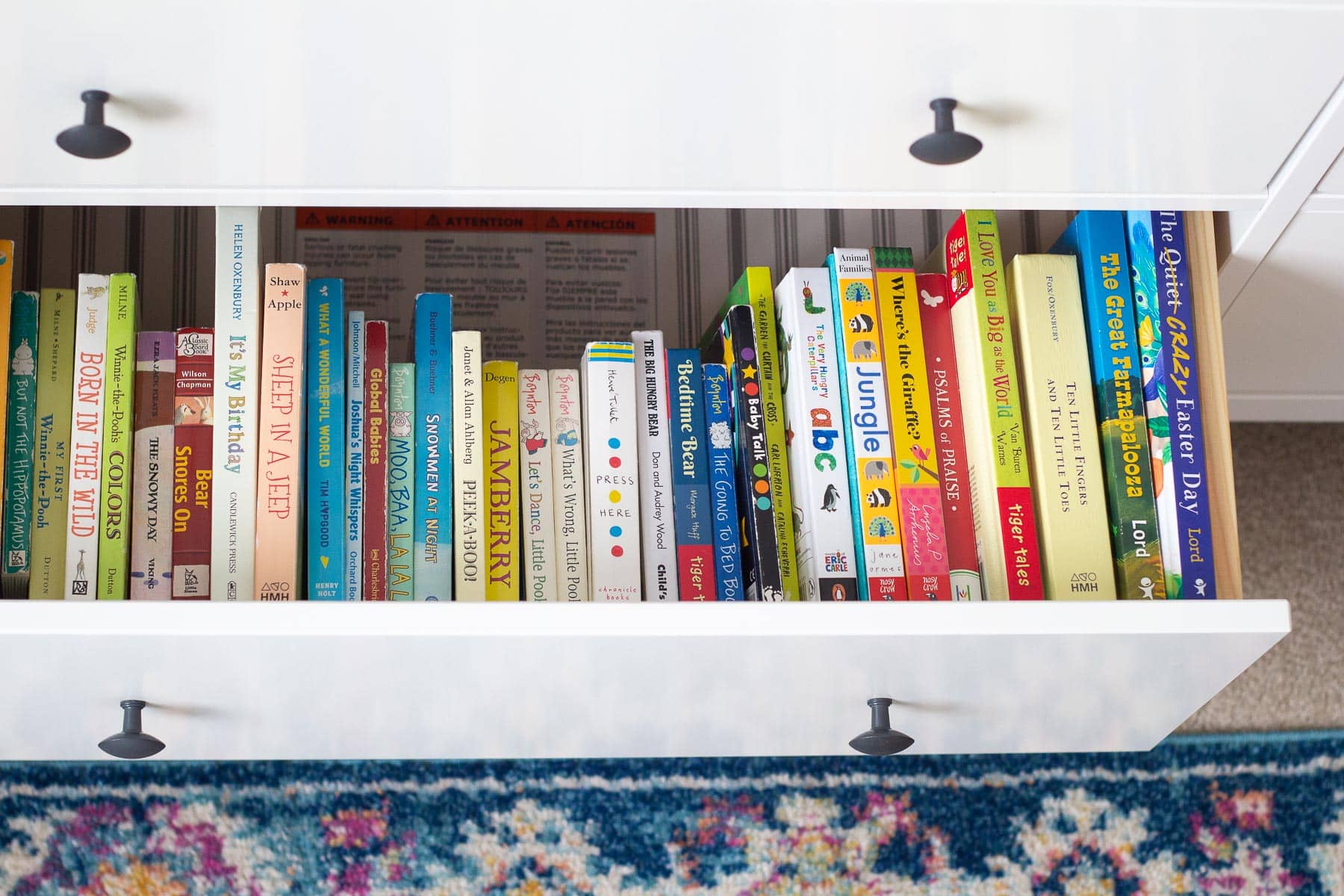


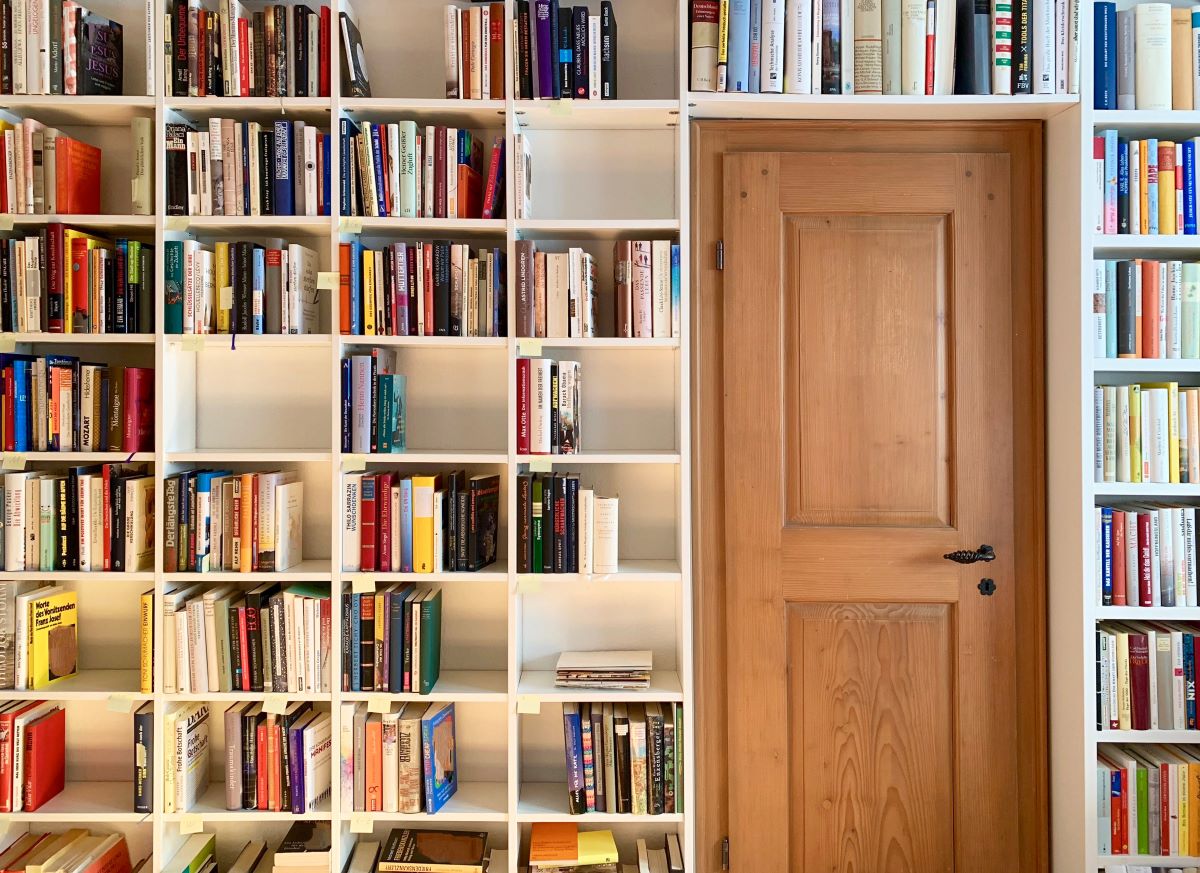


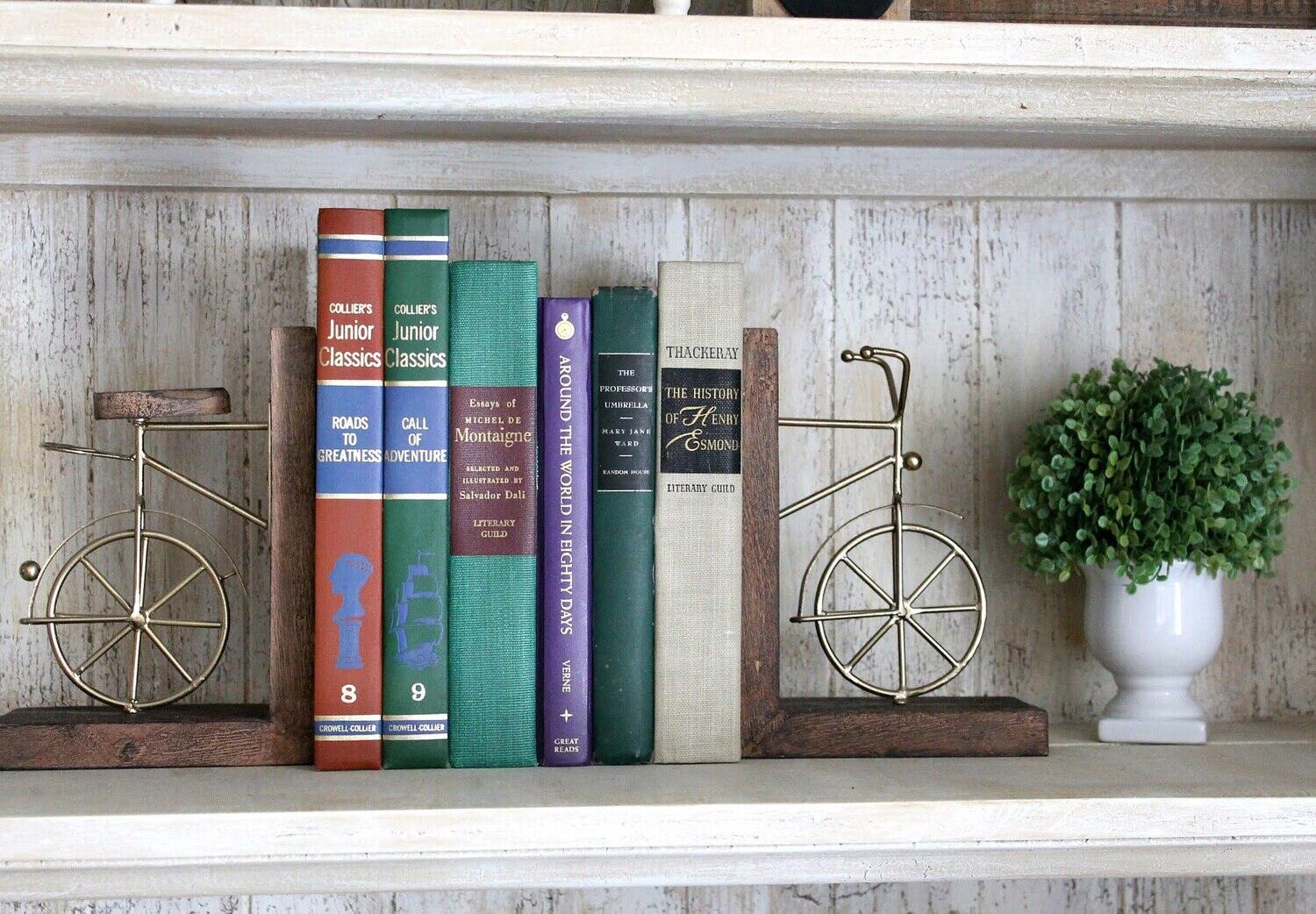




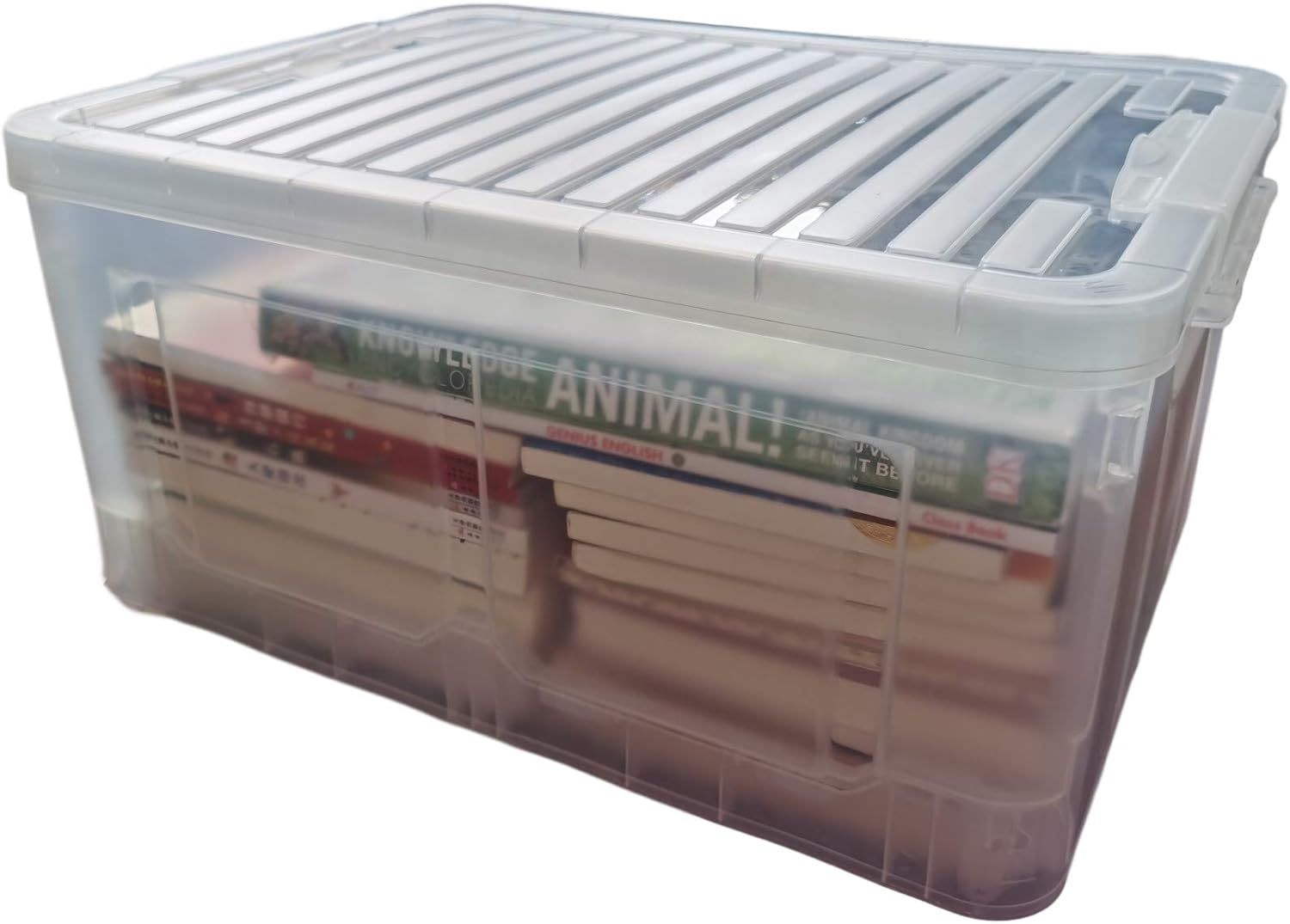

0 thoughts on “How To Store Books In Boxes”